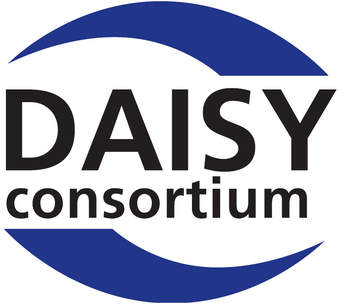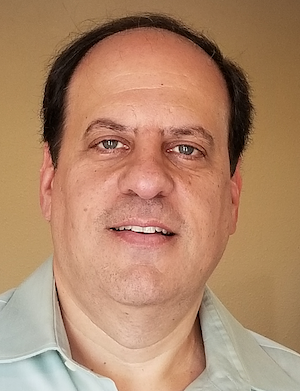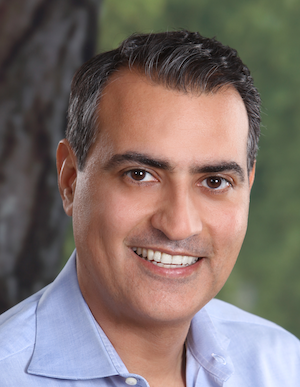 Millennials get a bad rap. If we believe conventional wisdom about them, they like to live with their parents, at least until they can move into their urban-center condo. They hate to drive. They're maddening in the workplace, demanding lots of frills and constant praise yet returning little loyalty. They're hyperconnected through their various digital devices. And, when they deign to think about health care, which isn't often, they want all digital, all the time. There's some truth to the conventional wisdom, but not as much as you'd think. A new study from Credit Karma flatly asserts that "everything you thought you knew about Millennials may be wrong," finding that they still have aspirations to much of the same "American Dream" as previous generations...
Millennials get a bad rap. If we believe conventional wisdom about them, they like to live with their parents, at least until they can move into their urban-center condo. They hate to drive. They're maddening in the workplace, demanding lots of frills and constant praise yet returning little loyalty. They're hyperconnected through their various digital devices. And, when they deign to think about health care, which isn't often, they want all digital, all the time. There's some truth to the conventional wisdom, but not as much as you'd think. A new study from Credit Karma flatly asserts that "everything you thought you knew about Millennials may be wrong," finding that they still have aspirations to much of the same "American Dream" as previous generations...
News
Open Source Software Has to Sell User Experience
 Mattermost does open source the right way. Open source software that is to succeed in this new world is going to have to be better than anything else. You can't sell just openness anymore; it is added value, not a unique selling point. Open source software now has to sell user experience. In a way it is a simpler metric, and probably one that is going to change open source forever—for the better. An exemplar of this new way is Mattermost, the open source messaging platform. Sure, they weren't first to the game, because Slack blazed the trail...
Mattermost does open source the right way. Open source software that is to succeed in this new world is going to have to be better than anything else. You can't sell just openness anymore; it is added value, not a unique selling point. Open source software now has to sell user experience. In a way it is a simpler metric, and probably one that is going to change open source forever—for the better. An exemplar of this new way is Mattermost, the open source messaging platform. Sure, they weren't first to the game, because Slack blazed the trail...
- Login to post comments
- News
Top 7 Open Source Business Intelligence and Reporting Tools
 In this article, I review some of the top open source business intelligence (BI) and reporting tools. In economies where the role of big data and open data are ever-increasing, where do we turn in order to have our data analysed and presented in a precise and readable format? This list covers tools which help to solve this problem. Two years ago I wrote about the top three. In this article, I will expand that list with a few more tools that were suggested by our readers. Note that this list is not exhaustive, and it is a mix of both business intelligence and reporting tools...
In this article, I review some of the top open source business intelligence (BI) and reporting tools. In economies where the role of big data and open data are ever-increasing, where do we turn in order to have our data analysed and presented in a precise and readable format? This list covers tools which help to solve this problem. Two years ago I wrote about the top three. In this article, I will expand that list with a few more tools that were suggested by our readers. Note that this list is not exhaustive, and it is a mix of both business intelligence and reporting tools...
- Login to post comments
- News
DAISY: A Linux-Compatible Text Format for the Visually Impaired
 If you're blind or visually impaired like I am, you usually require various levels of hardware or software to do things that people who can see take for granted. One among these is specialized formats for reading print books: Braille (if you know how to read it) or specialized text formats such as DAISY. DAISY stands for Digital Accessible Information System. It's an open standard used almost exclusively by the blind to read textbooks, periodicals, newspapers, fiction, you name it. It was founded in the mid '90s by The DAISY Consortium, a group of organizations dedicated to producing a set of standards that would allow text to be marked up in a way that would make it easy to read, skip around in, annotate, and otherwise manipulate text in much the same way a sighted user would...
If you're blind or visually impaired like I am, you usually require various levels of hardware or software to do things that people who can see take for granted. One among these is specialized formats for reading print books: Braille (if you know how to read it) or specialized text formats such as DAISY. DAISY stands for Digital Accessible Information System. It's an open standard used almost exclusively by the blind to read textbooks, periodicals, newspapers, fiction, you name it. It was founded in the mid '90s by The DAISY Consortium, a group of organizations dedicated to producing a set of standards that would allow text to be marked up in a way that would make it easy to read, skip around in, annotate, and otherwise manipulate text in much the same way a sighted user would...
- Login to post comments
- News
Millennials Are (Not) So Different
- Login to post comments
- News
Solving User Experience Problems with PatternFly
 Michael Dyrynda is a web developer at Hostworks, a freelance developer, and a blogger. He's working on his first open source project in Confomo with Matt Stauffer and podcasting the journey on briefs.fm. He also writes about web development and solving day-to-day problems with no readily available solutions. Michael's web development skills extend to front-end aspects of web development, including JavaScript, LESS/Sass/CSS, designing databases, as well as building applications that can scale. I connected with Michael on Twitter in late April after he tweeted that moving to PatternFly for an in-dev app was an "instant improvement"...
Michael Dyrynda is a web developer at Hostworks, a freelance developer, and a blogger. He's working on his first open source project in Confomo with Matt Stauffer and podcasting the journey on briefs.fm. He also writes about web development and solving day-to-day problems with no readily available solutions. Michael's web development skills extend to front-end aspects of web development, including JavaScript, LESS/Sass/CSS, designing databases, as well as building applications that can scale. I connected with Michael on Twitter in late April after he tweeted that moving to PatternFly for an in-dev app was an "instant improvement"...
- Login to post comments
- News
Why Apple HealthKit in iOS 10 Makes View/Download/Transmit Real
 Meaningful Use Stage 2 has a requirement that I’ve always considered to be the “cart before the horse” - patients must be able to View/Download/Transmit their data. Viewing is great - we’ve done that at BIDMC since 1999 for all patients and all data. Download makes little sense since at the moment there is nothing a patient can do with a download. Of the 2 million patients at BIDMC, not one has ever requested a download. Transmit makes even less sense since there is no place to transmit the data to...
Meaningful Use Stage 2 has a requirement that I’ve always considered to be the “cart before the horse” - patients must be able to View/Download/Transmit their data. Viewing is great - we’ve done that at BIDMC since 1999 for all patients and all data. Download makes little sense since at the moment there is nothing a patient can do with a download. Of the 2 million patients at BIDMC, not one has ever requested a download. Transmit makes even less sense since there is no place to transmit the data to...
- Login to post comments
- News
Consumer Access to Health Care Data: Still a Challenge
 Consumers continue to be frustrated with lack of access to their healthcare data, even as wearables and other consumer-targeted devices and services continue to sprout. Recently, ONC launched a Consumer Health Data Aggregator Challenge to spur the development of new applications and partnerships to provide aggregated health data to patients. While the financial “prize” for this effort is meager, recognition by ONC might be the real brass ring. This challenge focuses on the use of FHIR exclusively to support interoperability between systems and present data to consumers. I suspect that applicants will have some trouble meeting the requirements of the challenge effectively, and this is indicative of the broader challenge in supporting this type of data access.
Consumers continue to be frustrated with lack of access to their healthcare data, even as wearables and other consumer-targeted devices and services continue to sprout. Recently, ONC launched a Consumer Health Data Aggregator Challenge to spur the development of new applications and partnerships to provide aggregated health data to patients. While the financial “prize” for this effort is meager, recognition by ONC might be the real brass ring. This challenge focuses on the use of FHIR exclusively to support interoperability between systems and present data to consumers. I suspect that applicants will have some trouble meeting the requirements of the challenge effectively, and this is indicative of the broader challenge in supporting this type of data access.
- Login to post comments
- News
Building a Business on a Solid Open Source Model
 Since we announced Nextcloud, an ownCloud fork, many people have asked me how we plan to build a sustainable, healthy open source business. My short answer is that it requires a strong focus on maintaining a careful balance between the needs of all stakeholders: users, contributors, employees, customers, and—of course—investors. Building a solid open source business requires that management has confidence in the abilities of your company, stakeholders must be on board with the business model, and everyone must understand that balance is important for the ecosystem. Like a rising tide lifts all boats, a strong ecosystem benefits all stakeholders...
Since we announced Nextcloud, an ownCloud fork, many people have asked me how we plan to build a sustainable, healthy open source business. My short answer is that it requires a strong focus on maintaining a careful balance between the needs of all stakeholders: users, contributors, employees, customers, and—of course—investors. Building a solid open source business requires that management has confidence in the abilities of your company, stakeholders must be on board with the business model, and everyone must understand that balance is important for the ecosystem. Like a rising tide lifts all boats, a strong ecosystem benefits all stakeholders...
- Login to post comments
- News
Is the Technology Gap the Reason Why Medical Errors are the 3rd Leading Cause of Death in the US?
 Hardly a day goes by without some new revelation of an information technology (IT) mess in the United States that seems like an endless round of the old radio show joke contest, “Can You Top This” except that increasingly the joke is on us. From nuclear weapons updated with floppy disks, to critical financial systems in the Department of the Treasury that run on assembler language code (a computer language initially used in the 1950s and typically tied to the hardware for which it was developed), to medical systems that cannot exchange patient records leading to a large number of needless deaths from medical errors.
Hardly a day goes by without some new revelation of an information technology (IT) mess in the United States that seems like an endless round of the old radio show joke contest, “Can You Top This” except that increasingly the joke is on us. From nuclear weapons updated with floppy disks, to critical financial systems in the Department of the Treasury that run on assembler language code (a computer language initially used in the 1950s and typically tied to the hardware for which it was developed), to medical systems that cannot exchange patient records leading to a large number of needless deaths from medical errors.
- Login to post comments
- Feature Story
Using the Latest Advances in Data Science to Fight Infectious Diseases
 One of the most dramatic shifts in recent years that is empowering epidemiologists to be more effective at their jobs is occurring due to improvements in data technologies. In the past, the old "relational" data model dictated that data had to be highly structured, and as a result treated in distinct silos. This made it difficult, if not impossible, to analyze data from multiple sources to find correlations. Epidemiologists would spend many minutes or even hours on each query they ran to get results back, which is unacceptable when you need to test dozens of hypotheses to try to understand and contain a fast-moving outbreak. (Imagine how you would feel if each one of your Google searches took 45 minutes to return!) By contrast, using newer technologies, the same queries on the same hardware can run in seconds. Read More »
One of the most dramatic shifts in recent years that is empowering epidemiologists to be more effective at their jobs is occurring due to improvements in data technologies. In the past, the old "relational" data model dictated that data had to be highly structured, and as a result treated in distinct silos. This made it difficult, if not impossible, to analyze data from multiple sources to find correlations. Epidemiologists would spend many minutes or even hours on each query they ran to get results back, which is unacceptable when you need to test dozens of hypotheses to try to understand and contain a fast-moving outbreak. (Imagine how you would feel if each one of your Google searches took 45 minutes to return!) By contrast, using newer technologies, the same queries on the same hardware can run in seconds. Read More »
- Login to post comments
- News